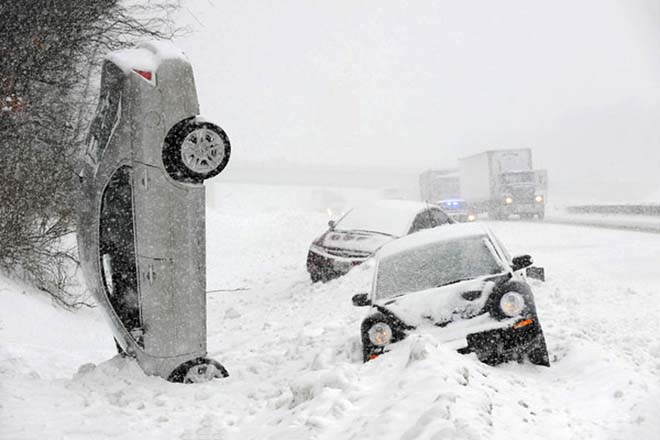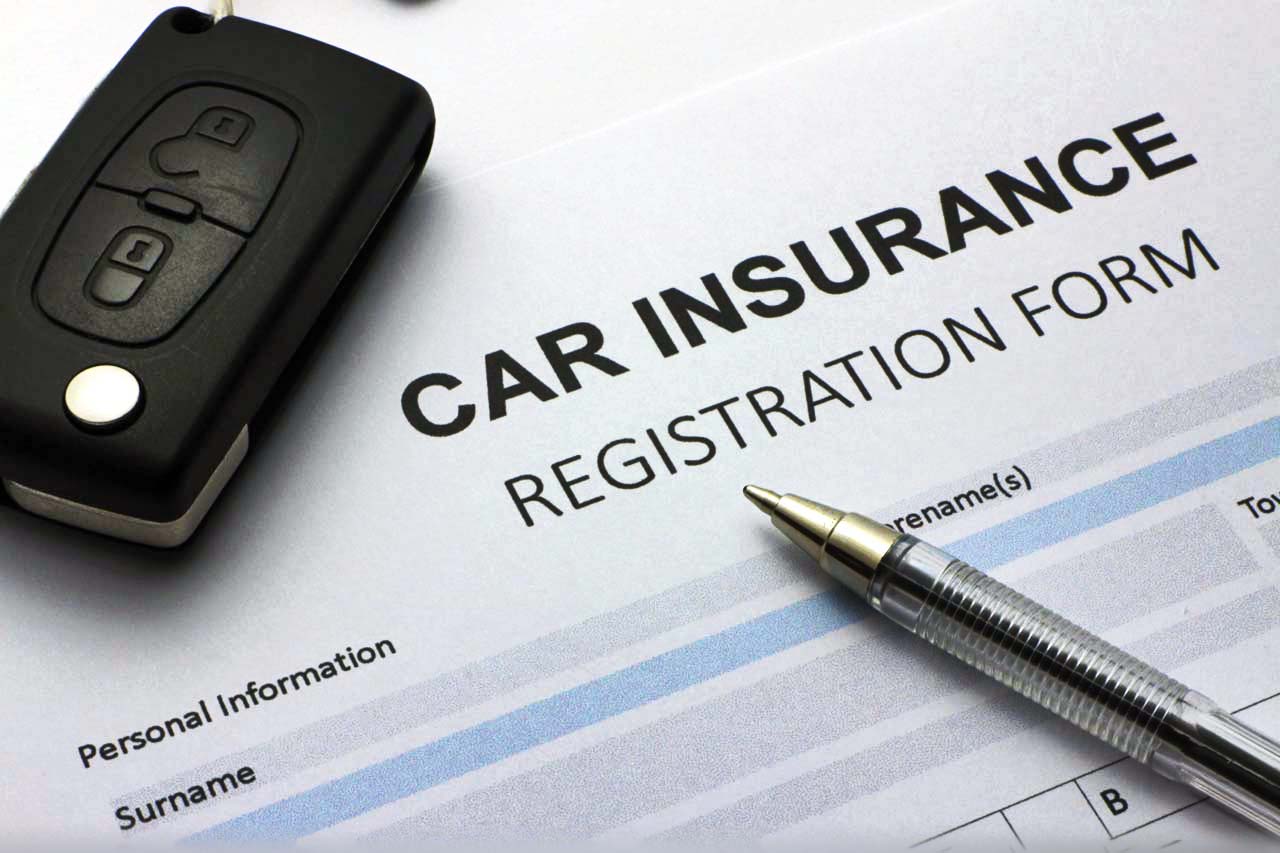Recently while daydreaming – which I often do as an alternative to working – it occurred to me that over the years I’ve spent thousands of dollars on car insurance. Actually, tens of thousands of dollars.
Insurance is mandatory in all provinces, so there’s no “opting out.” For most drivers it’s simply an annual fee, almost like an annual tax. What do consumers get in return? “Permission to drive,” would be a common (not entirely jaded) assessment.
In my experience, for instance, after all that money I think I’ve made claims on two cracked windshields (in different centuries, to be clear). I recall the second time it was on the advice of my insurance agent, who pointed out that my “comprehensive” coverage was designed for just that type of repair and that my insurer encouraged it.
So I made a claim, and on the following invoice I noticed that I now had an “incident” attached to my policy and an accompanying letter indicating that should another “incident” occur during the next three years, well, the cost of my insurance would be increased.
This is the kind of thing that does not endear insurance companies to their clients.
It turns out, though, that the way car insurance is delivered, and its cost, varies significantly from province to province, and by far the most expensive province for car insurance is Ontario. This is not a new thing; it’s been this way forever, and apparently it is a monster that no government, no industry association, no company and no consumer advocacy group can wrestle to the ground.
One response to the high cost of car insurance in Ontario was that in 2013 the then-minority and subsequently majority Liberal government made a campaign promise that insurance companies would be forced to drop insurance rates by 15 percent by August 2015. People liked the sound of that, for sure, but you know what? To be really competitive with many other provinces, it needs to come down way more than 15 percent. In Ontario it needs to come down by 50 percent!
So what’s the national picture, you might wonder? How do the provinces compare? Turns out it’s difficult to pin down comparable prices for auto insurance across the country. There are different systems in place (public and private); numbers change up and down over the years and within years depending on who collected the data and how and when it was collected. It’s not straightforward, therefore, to get an objective, clear picture from one source using the same parameters to generate the numbers. But comparing “average insurance premiums” is one way.
To that end, the Insurance Bureau of Canada (IBC), a national insurance industry association, is a widely quoted source of comparative car insurance data. But while it offers some useful information, the IBC represents private insurers and consequently data on the publicly insured provinces is typically not available (although the IBC does include British Columbia, where auto insurance is publicly managed).
The most recent IBC data is from 2013, and these are the numbers most commonly found in current articles about car insurance in Canada. The comparables for Quebec, Manitoba and Saskatchewan can be derived from the individual provinces using 2013 data for Quebec and 2009 and 2010 data for Manitoba and Saskatchewan respectively. The territories are also included in the table below.

Notable is that Quebec – offering the lowest rates in Canada – runs a unique-in-Canada public/private system established in 1978 comprising two auto insurance plans: a private plan that covers civil liability and property damage, and a public plan administered by Société de l’assurance automobile du Québec (SAAQ), which covers bodily injury sustained in an automobile accident.
Ontario, in comparison, relies on a private system that that includes over 100 different insurance companies. Three other provinces – Manitoba, Saskatchewan and British Columbia – are public systems (operated by the provincial government). The rest of the provinces are private sector.
But it’s not simply whether the system is public or private that determines the premiums you pay because as you will see, many provinces that exclusively rely on private insurers offer, on average, very favourable rates. One publicly insured province, British Columbia, offers rates that are virtually the same as the privately insured province next door, or as Alberta likes to point out (and perhaps why the IBC includes the BC data), its average is better than BC’s public system. The other publicly managed systems uniformly offer very competitive rates.
But Ontario is singular. Almost 30 percent more than the second highest province; more than double that of Quebec. What is one to make of this?
There are truly countless articles and reports that seek to explain Ontario’s sky-high auto insurance rates – even back in 1990 the province was trying to fix the system. But in 2009 the Government of Ontario established an anti-fraud task force in an attempt to get to the bottom of it. The general consensus, bluntly, was that too many people are gaming the system. In other words, from individuals to organized crime, insurance fraud (padding the claim, faking the claim) is widespread in Ontario. However, there is more to it than that.
The task force’s 2011 Interim Report concluded that the severity of injuries suffered by automobile accident victims in Ontario actually decreased by six percent from 2006 to 2010 while insurance claims for some reason increased by $3 billion during the same period. Of that $3 billion increase, $2.4 billion was paid out for a variety of accident benefits (as opposed to costs associated with fixing or replacing your vehicle), supporting the inference that fraud is involved.
However, the task force’s Interim Report also noted that, “A figure of $1.3 billion has been used to describe the cost of auto insurance fraud in Ontario for some time. We have attempted to understand the basis for that calculation and have concluded that the $1.3 billion figure cannot be considered a verifiable measure of the extent of fraud at this time.” So the fraud component could be higher; but also it could be lower.
We’ll get back to that shortly, but regarding accident benefits, consider these current numbers. According to the IBC (which agrees insurance rates in Ontario are too high, by the way), the average no-fault accident benefits payout in 2013 in Ontario was over $31,000, while in Alberta it was $8,600 and in Atlantic Canada it was $3,700. Also in 2013, the average cost of a medical rehabilitation claim in Ontario was $31,939, while in Alberta it was $3,048. It has been widely reported that accounting firm KPMG in 2012 estimated that auto insurance fraud in Ontario costs insurers a whopping $1.6 billion annually (up from the $1.3 billion mentioned above), representing up to 18 percent of total claims, and yes, that would drive up the cost of your premiums.
A major contributor to these bloated numbers is that Ontario, and specifically the Greater Toronto Area (GTA) appears to be the epicenter of what are called “staged collisions.” These will involve a combination of medical facilities, rehabilitation centres, tow truck companies, body shops, legal and paralegal professionals, and maybe vehicles with three or four occupants who all induce “injuries” after low-speed collisions, and who knows, maybe there are even insurance adjusters who have a role in some of these scams. This is described as organized fraud.
According to a recent CBC report (2015), “In the past five years, there have been several large staged-crash rings uncovered in Canada that racked up millions of dollars in fraudulent insurance claims.”

Other provinces are not immune. Manitoba, for instance, reported a ring that involved “nearly 40 suspects bilking the public insurer for almost $1 million.” Back in Ontario, there was a $4 million scam in Toronto, “that resulted in hundreds of thousands of dollars in fines for four clinics that created false invoices.”
And in New York in 2013, 10 doctors and three lawyers were allegedly involved in a $279-million auto insurance fraud. This included a chain of medical clinics, and “ambulance chasers” convincing genuine car-crash victims to seek unnecessary care at the complicit clinics.
That ring was busted, but apparently some of the people involved in this criminal enterprise may be involved in a similar scheme in Toronto, says the CBC.
All that said, you’ll recall the oft-reported pronouncement that Ontario auto insurance fraud costs insurers $1.6 billion per year. Well, the above examples are significant, don’t get me wrong, but it does appear that their scale is a fraction of the purported multi-billion dollar losses.
Fortunately it turns out that one of the Ontario Automobile Insurance Anti-Fraud Task Force’s mandates was to identify (quantify) the extent of insurance fraud, and as you’ll recall, the amount of $1.3 billion annually as cited in the Interim Report was deemed unverifiable. So you’d certainly want to see a verified number for the Final Report, but the Task Force was still unsure about this, so working with the IBC, they commissioned accounting firm KPMG to identify solid numbers. KPMG, using new data analytics tools, came up with a range of $768 million to $1.56 billion that it would appear the Task Force found lacked sufficient precision.
The task force, therefore, retained another firm, Ernst and Young, to verify the methodology and conclusions derived by KPMG. Ernst and Young supported KPMG, but stated that KPMG’s numbers may be overestimated in some areas and underestimated in others. But basically they were okay with the wide estimated range.
So it’s the more impressive $1.56 billion (rounded by the media and the IBC to $1.6 billion) which has become the number most often quoted in reports associated with auto insurance fraud in Ontario, not the lower $768 million (still huge, no argument there) that would represent about one-third of the unexplained increase in accident benefits identified by the task force. Even if you took a midrange figure, say $1.1 Billion, it still begs the question: In reference to the $2.4 Billion increase in accident benefits, what accounts for the rest?
Chalk some of it up to the severity and high frequency of Ontario’s claims, and chalk up more of it to the high frequency of lawsuits. Ontario drivers will be familiar with the US-style “Better call Saul” type roadside billboards that have appeared, and similar advertisements on TV encouraging motorists to litigate if they’ve been involved in an “incident.” But there must be a reason such opportunistic legal practitioners are proliferating.
Interestingly, there was an Ontario Auto Insurance Five Year Review conducted in 2008 and delivered in 2009 that featured broad and detailed submissions and recommendations from consumer groups, healthcare providers, the insurance industry, legal representatives, municipalities and the transport system and other agencies. According to the report’s Executive Summary, “Virtually every stakeholder commented on the complexity of the existing accident benefit system and the level of regulatory burden created Ontario’s Statutory Accident Benefits Schedule (SABS).”
From the Insurance Bureau of Canada’s submission: “Most importantly, our package of recommendations is directed at remedying the key sources of recurring instability in Ontario's auto insurance system and, in particular, of repeated episodes of surging injury claims costs.”
Specifically, states the IBC, “Ontario drivers pay a lot more for auto insurance because the amounts insurers pay for claims, especially injury claims, are a lot higher in this province. A significant portion of this difference is found in the first party benefit package that enables funding for a level of health care and related supports which are well in excess of community standards – whether these are measured by other Canadian auto insurance jurisdictions or by Ontario’s public health and WSIB systems. It is a system that has seeded a pervasive culture of entitlement not only for claimants, but also for their families, legal representatives, and a burgeoning corps of service providers.”

From the Co-operators Group Limited: You have correctly pinpointed the key issues: affordability and availability; consumer protection and statutory accident benefits. This Five Year Review is an opportune time to address the current inefficiencies and consider positive adjustments that will benefit both consumers and insurers.
And from the Canadian Association of Direct Response Insurers (CADRI): “CADRI believes that government must act to enforce the threshold definition [allowing claimants to sue in cases of death or disfigurement] and prevent less seriously injured claimants from suing in tort. If the threshold is removed or weakened, Ontario would be in the position of having both generous no fault coverage and open access to tort. The number and size of successful tort claims would be unaffordable to the system. This would drive insurance costs to very high levels, which would be reflected in higher premiums, making automobile insurance prohibitively expensive for a greater number of Ontarians.”
Note that fraud was not even mentioned in above examples and this in the same year the Ant-Fraud Task Force was convened. Nor is mention of fraud acknowledged in the entire report. Instead, what the five-year review focuses on are too-generous accident benefits that drive up premiums, and language and complexity in the Insurance Act that enable more people to seek remedy for their disputed claims in the courts.
It is stated occasionally by some organizations submitting recommendations that the system at the time enabled abuse and possibly fostered a culture of entitlement. One insurer, Dominion, suggested that the industry should focus on restoring a claimant’s circumstances rather than improving them (“indemnity rather than entitlement”).
In conclusion, Ontario’s car insurance industry and regulatory bodies certainly suffer from a combination of organized insurance fraud and apparently an endemic culture of insurance abuse, but the Ontario system also appears to suffer from particular vulnerabilities to legal challenges that maybe legitimately (and unfortunately for insurance companies and consumers alike), take them into court where large settlements may be imposed. In other words, the system is perhaps too easy to exploit.
According to the IBC, auto insurance fraud costs Ontario consumers up to $200 per year on their policies, and the IBC is on record as enthusiastically supporting Ontario’s anti-fraud initiatives. Well, subtract $200 from the Ontario average premium, and Ontario would still be the most expensive province for car insurance in Canada, so as I say, it’s not just fraud that’s the problem.
Perhaps more comprehensive and thorough oversight – as apparently found in public systems or Quebec’s hybrid public/private system (we can but dream…) – could better manage automobile insurance in Ontario. Certainly the average cost of premiums in those provinces indicates that it would. Why not give it a try?
One wonders if all the attention paid to fraud is something of a distraction away from doing just that. After all, if fraud is elevated to becoming the main problem, and the government is focusing its attention on fraud, then why even consider a public alternative for auto insurance. I’m just saying…
In 2014 the Ontario government did pass the “Fighting Fraud and Reducing Automobile Insurance Rates Act, and by November of that year, “the province has taken action to address more than half of the 38 recommendations made by Ontario's Auto Insurance Anti-Fraud Task Force.”
How’s it going? According to the latest numbers from the Financial Services Commission of Ontario (FSCO), the body that sets rates and manages disputes, for the fourth quarter of 2015 insurance rates in Ontario decreased by an average of seven percent. August 2015 came and went, and the promised 15 percent decrease over two years is now described as “a stretch goal,” according to Ontario Premier Kathleen Wynne, which I believe means it’s basically unattainable.
With rates this high, then, no wonder some Ontario consumers are willing to leave their principles at the garage door. But good on those who don’t.
Useful links
Ontario Auto Insurance Anti-Fraud Task Force - Interim Report
Ontario Automobile Insurance Anti-Fraud Task Force
Legislative Assembly of Ontario | Bill 15, Fighting Fraud and Reducing Automobile Insurance Rates Act, 2014
Ontario auto insurance rates up slightly, despite Liberal pledge - CBC News
Comparison by province | GAA
Fighting Auto Insurance Fraud: What You Can Do
Contact FSCO | Automobile Insurance Dispute Resolution
Newsroom : Auto Insurance Legislation Passes, Will Help Reduce Costs and Fight Fraud
Ontario to Tackle Auto Insurance Fraud with “Serious Fraud Office”
Insurance Fraud | Insight Consulting And Investigative Services Inc.
New tool launched to combat Canadian insurance fraud
Automobile Insurance
Report on the Five Year Review of Automobile Insurance, March 31, 2009
Promise to cut car insurance rates by 15 per cent was always a ‘stretch goal,’ says Ontario premier | National Post
In-depth – Ontario Budget SABS BI Reforms April 27

